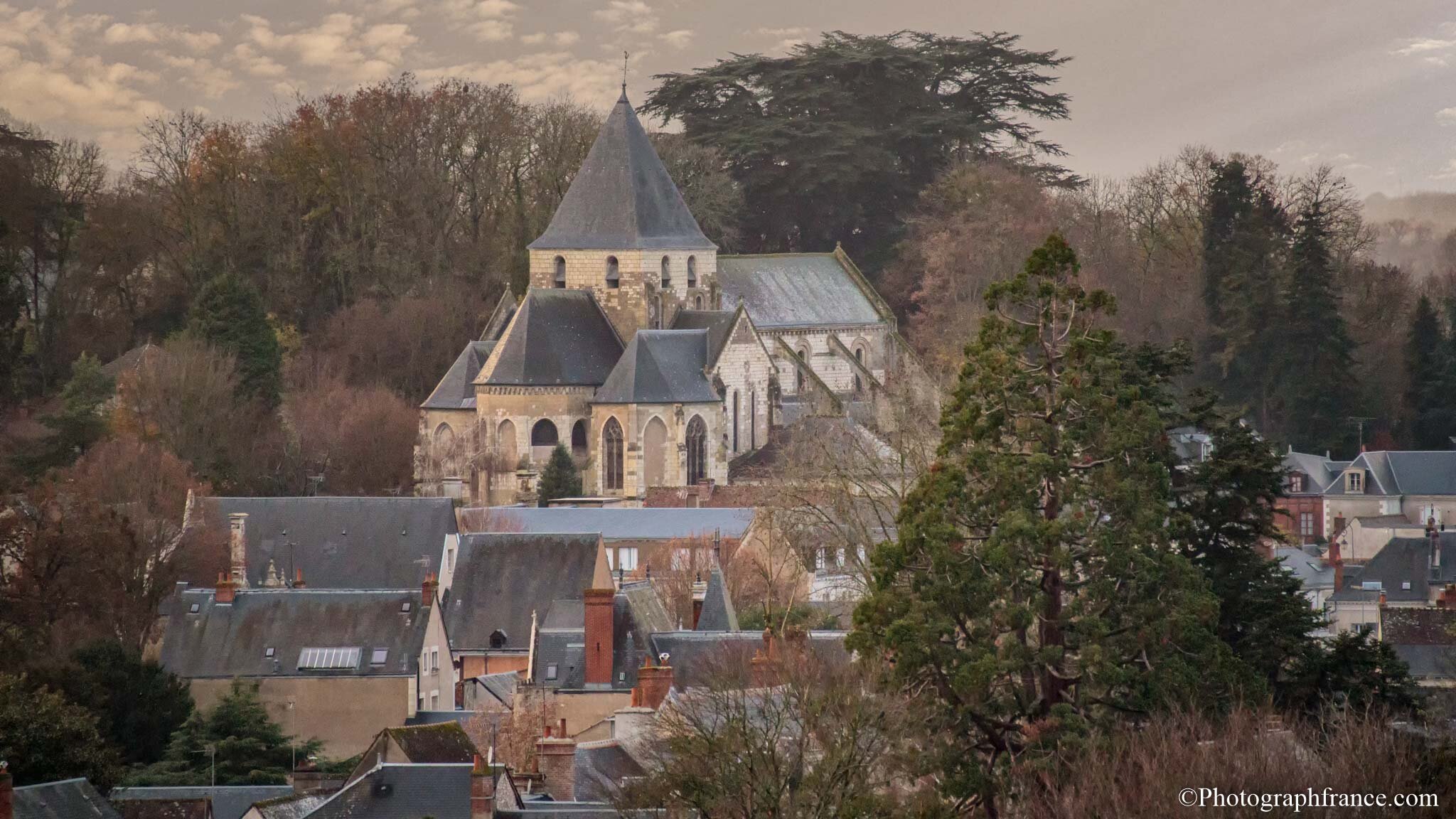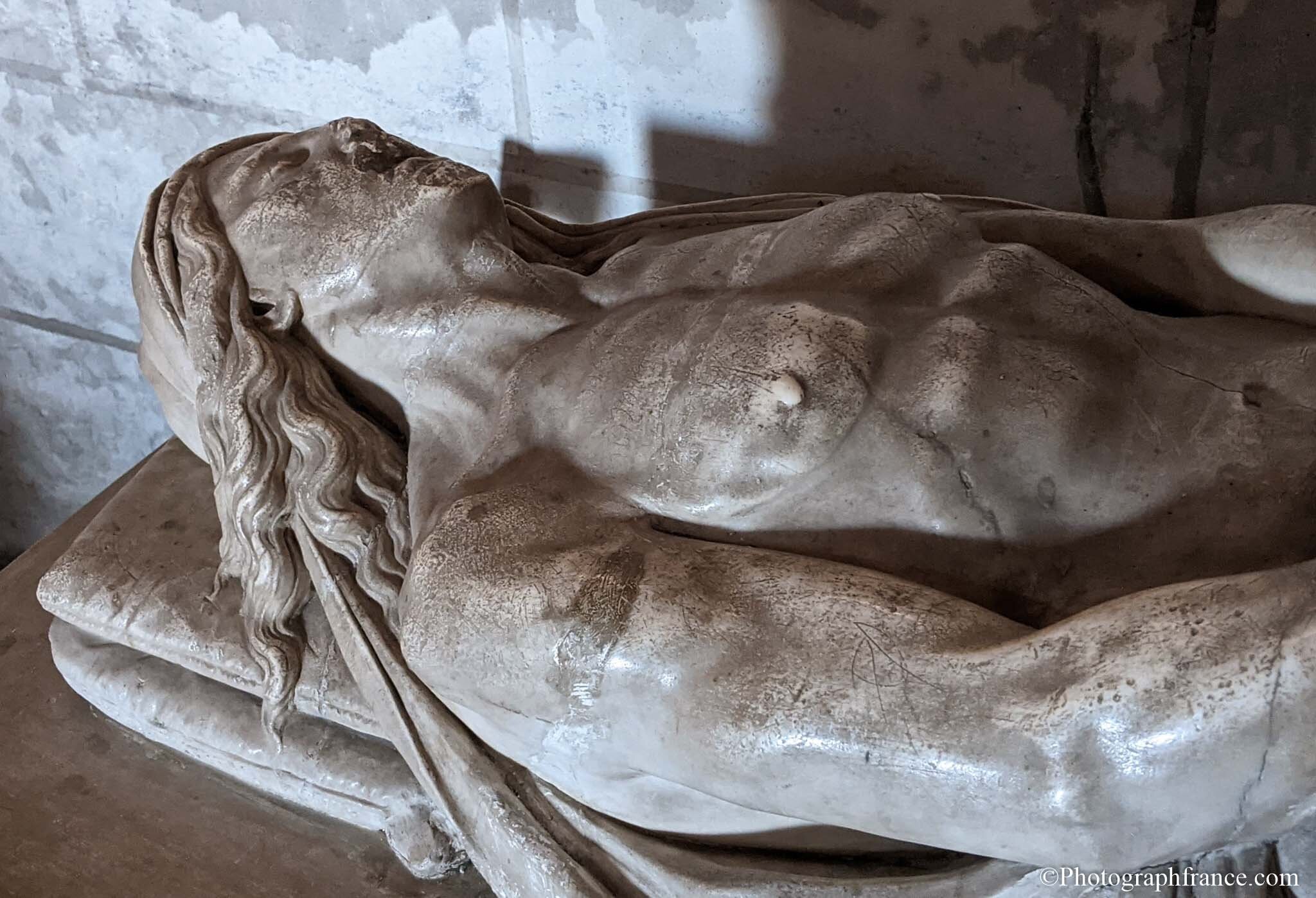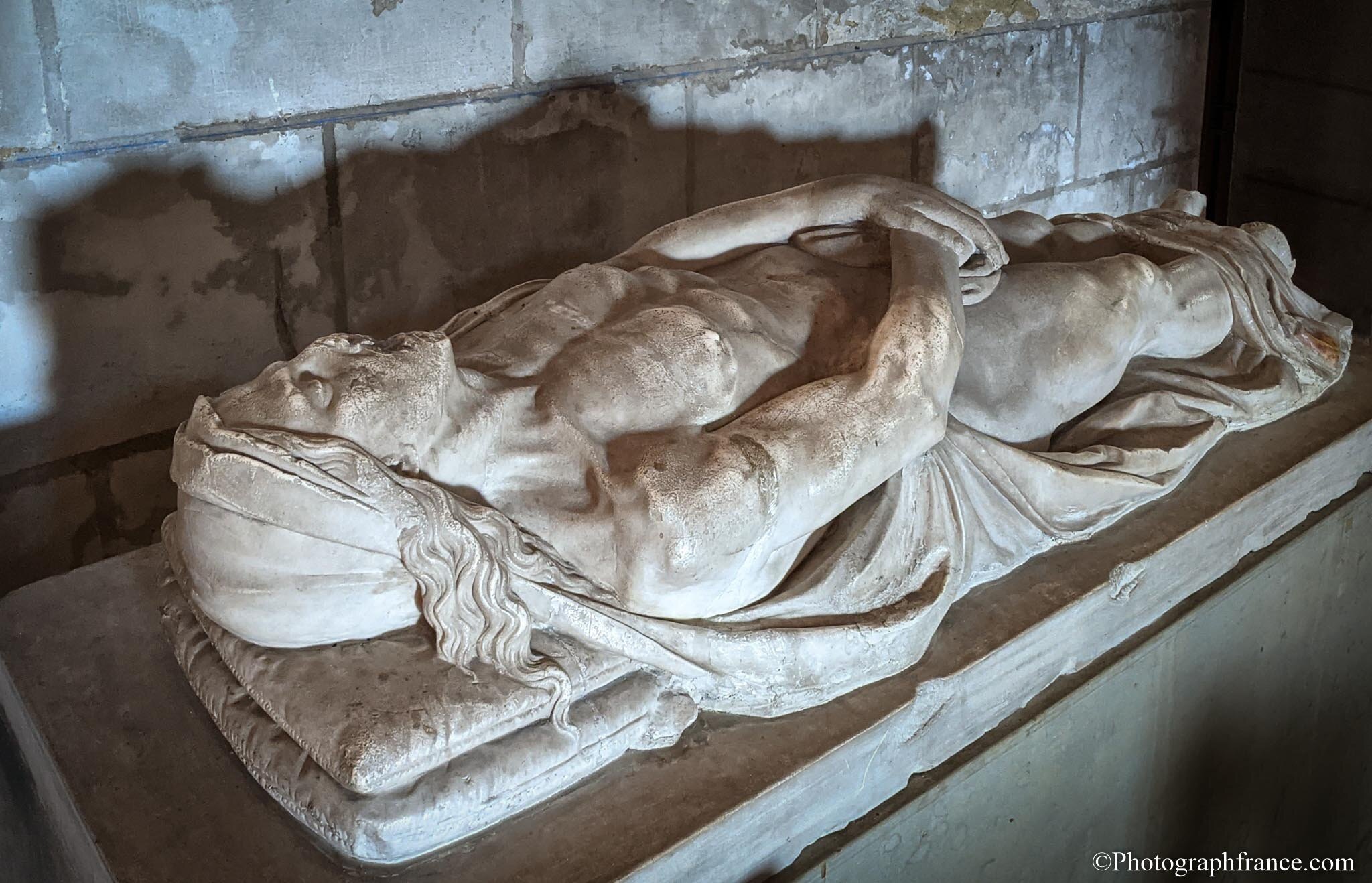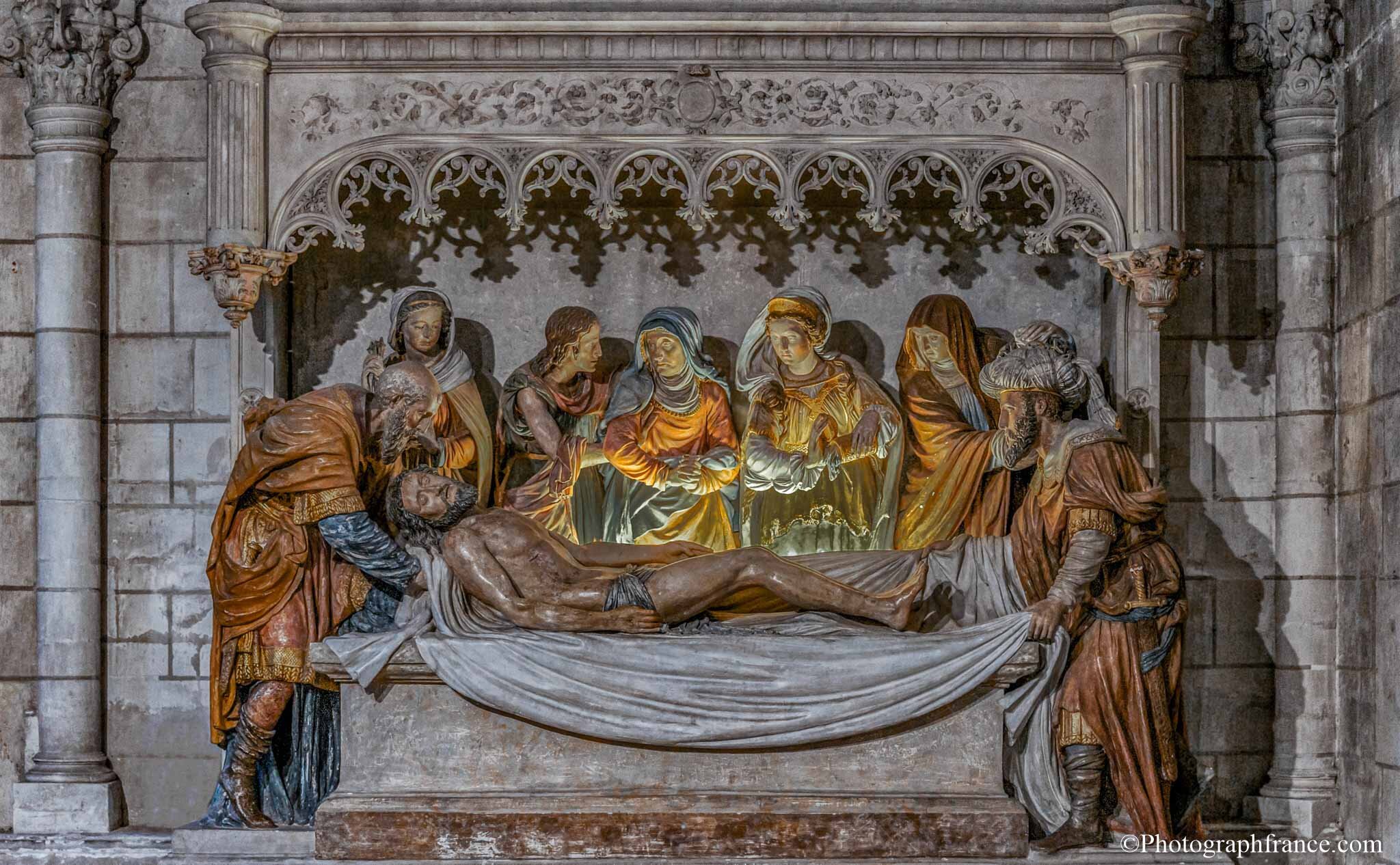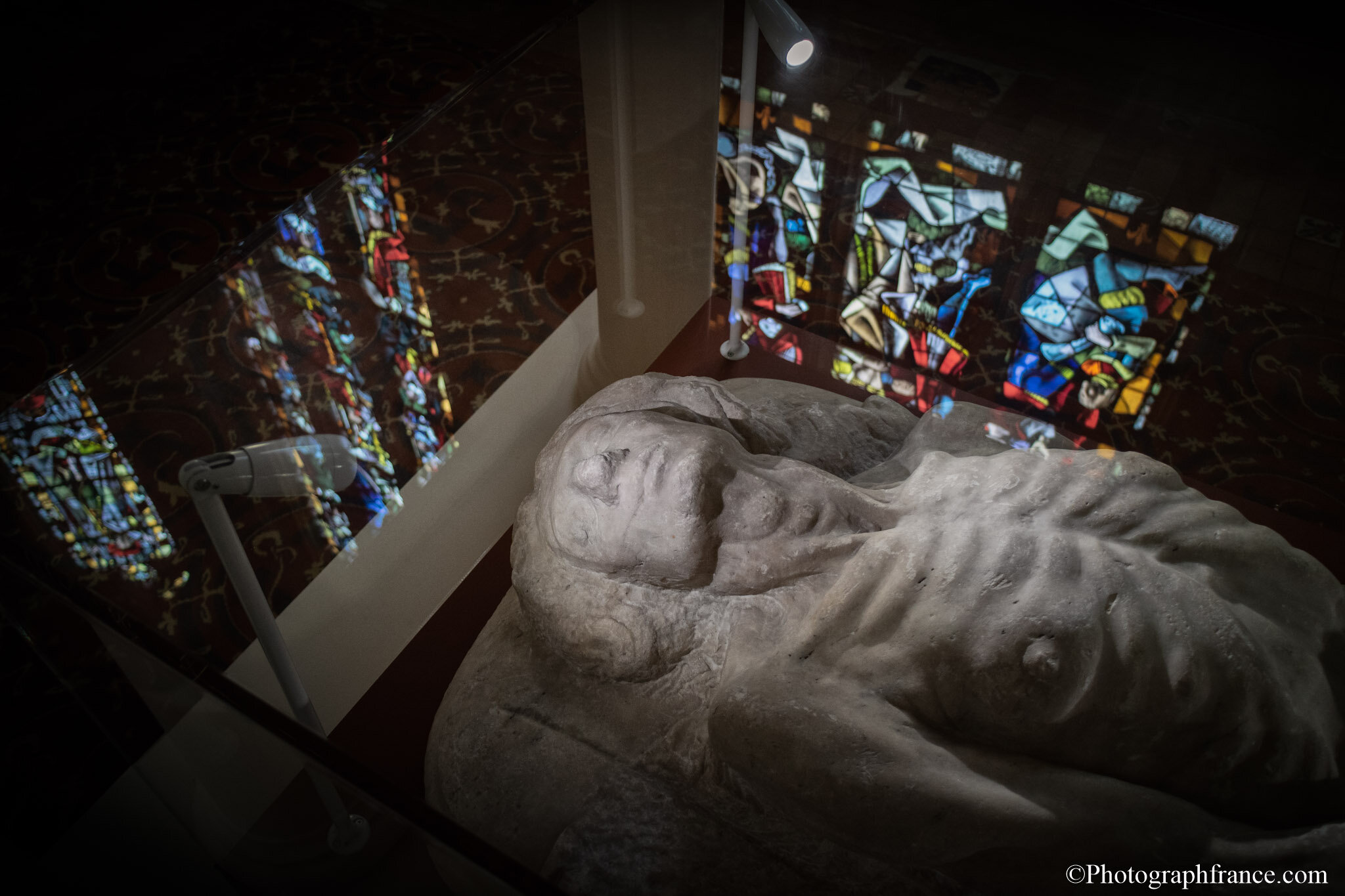‘The Drowned Woman’ in St Denis, Amboise
St Denis, Amboise
For the last hundred and fifty years or so, visitors to this ancient and beautiful church have pondered over a sculpture of ‘the drowned woman’. Now, thanks to Anna Baydova’s* awe inspiring, meticulous research** they ponder no more.
An urban myth is that Primaticcio (1504–1570) painter and sculptor at the Courts of François I, Henry II, François II and Charles IX, grief stricken by the death of his wife who drowned during a boat trip on the Loire, immortalised her body in marble.
Well, at least the dates fit.
The woman is not Signor Primaticcio’s drowned wife, if indeed he ever had a wife, let alone one who drowned. Thanks to Anna Baydova who followed the trail, the real story behind the sculpture is far more interesting.
Her account, which reads like a detective story, brings Eva Perón to mind. (Her corpse, like the effigy of ‘the drowned woman’, was moved from pillar to post. Eva was hidden in a van parked behind a cinema in Buenos Aires, buried in a cemetery in Milan, driven across Europe, delivered to her husband Juan Perón in Madrid and finally buried at home in Argentina twenty years after she died).
In 1780, the Duke of Choiseul, who collected properties (Château Amboise, Chanteloup, Hôtel Morin, Hôtel Choiseul, Château La Fourchette etc.,) bought, then demolished Château de la Bourdaisière near Amboise. He also demolished the old chapel of Notre Dame of Bondésir built by the Babou-Gaudin family. Their tombs, there for hundreds of years, were taken to St. Florentin in Amboise. ‘The drowned woman’ embarrassed worshippers who complained about it. In 1804, the Archbishop asked the priest for a report on the ‘indecent statue’.
Marie Gaudin, St Denis Amboise
In 1827 M. de Vierzon, an expert on ancient monuments wrote to the Mayor of Amboise saying the effigy was not of a woman but of a man, perhaps Cardinal d’Amboise or Charles VIII. The Director of the Louvre catalogued the sculpture as ‘The Drowned Man’ or ‘Statue of a Recumbent Man’. They remarked on the muscular legs, large hands and Adam’s apple. Some even suggested it might be a beardless Jesus. However, breasts, long curly hair and the head covered with a drape left no doubt that it is a woman.
‘The drowned woman’ was in St. Florentin for almost a hundred years until 1864. Arsène Houssaye, Inspector of Fine Arts, in Amboise to find the tomb of Leonardo da Vinci, suggested it would be better off in Château Amboise. He was wrong. During the Franco-Prussian War of 1870, the effigy had to be hidden in the basement for safe keeping.
Marie Gaudin, St Denis Amboise
According to a law passed in 1887, without an agreement from the French Ministry of Public Instruction and Fine Arts, ‘the drowned woman’ could not be restored, sold, or moved.
Then began the debate as to who owned the sculpture. One would have thought the descendants of the Babou- Gaudin family or the duke of Choiseul but the Chateau where it was kept was owned by Henri d’Orléans, Count of Paris. He said ‘the drowned woman’ was his.
In 1890, the curator of sculpture at the Louvre in Paris photographed it during a visit to Amboise and wanted to add it to the Museum collections. The Mayor of Amboise agreed to exchange it for tapestries for the new town hall. The Archaeological Society of Touraine, upset at the thought the region was about to lose part of its historical heritage, protested to Henri d’Orléans. He said the town could have it on condition it never left Amboise.
St Denis, St Hubert’s chapel, and the tower of St Florentin, Amboise
In 1894, ‘the drowned woman’ was moved into Saint Hubert’s chapel in the Château grounds.
In 1896, when it was formally given to the town, it was decided to move the effigy to St. Denis which already had The Burial of Christ which, like the drowned woman, came from the chapel of Bondésir. After a hundred years, they were reunited.
The Burial of Christ, St Denis Amboise
The Burial of Christ is the magnificent terracotta sarcophagus of Philibert Babou. The figure of Jesus, said to be modelled on family friend François I, lies on the shroud in which Joseph of Arimathea, Nicodemus and Saint John are burying him. The model for the Virgin Mary was Philibert’s wife, Marie Gaudin. She is surrounded by three saints modelled on her notoriously promiscuous daughters.
The Préfect of Indre-et-Loire asked the Archbishop of Tours if the presence of the nude effigy of a drowned woman in the church was an issue. The Archbishop said he had taken steps to prevent the statue from becoming the object of worship!
In 1975, the conservator of Historical Monuments, restored The Burial of Christ. He removed the canopy and the metal grid in front of it and the figure of Mary Magdalen, which did not come from the chapel of Bon Désir.
Thanks to Anna Baydova, we now know that the drowned woman is Marie Gaudin who did not drown. She died of old age. The Burial of Christ, her husband’s tomb, was in the funeral chapel of Bondésir founded by him and Marie in 1544. The sculpture was placed on the tomb of the most important woman in the family, Marie Gaudin.
A life-size recumbent effigy representing a decomposing corpse of the deceased under a life like effigy was used on royal tombs. If Marie commissioned this effigy, it is not too fanciful to surmise she might have seen or heard about the one commissioned in 1565 by Catherine de’ Medici (displayed in Château Blois 2020). They are very similar.
Catherine de’ Medici, Château Blois
Marie did not die until 1580.
In the event, the effigy was not used. Perhaps Catherine de’ Medici considered it too gruesome or maybe it was not finished. The sculptor, Girolamo della Robbia, died in the middle of working on it.
The rejected effigy must surely have been a subject for discussion in royal circles and who better to tell Marie about it than her son Jean Babou, a prominent member of Court, whose wife was Lady-in -Waiting to Catherine de Medici.
Marie Gaudin, Lady-in-Waiting to Queen Eleanor of Austria, was the prettiest girl in France. She married Philibert Babou when she was fifteen and was the mistress of François I, Charles V and Pope Leo X. The Pope gave her a valuable diamond ring known as the Gaudin diamond.
Marie’s grand-daughter Gabrielle d’Estrées was the mistress of Henry IV. Gabrielle’s sister, Angélique, was the mistress of Henri III. Henry IV appointed Angélique Mother Superior of the Royal Abbey of Maubuisson so that he could visit Gabrielle in secret. When news of the dissolute life at Maubuisson caused a scandal. Angélique was rumoured to have borne twelve children by different fathers. The Abbot General asked the Court for permission to remove her and incarcerate her in the convent of The Penitent Daughters of Paris.
* Ecole Pratique des Hautes Etudes Paris
** Anna Baydova’s work can be seen by clicking here.
Post by Pamela, photography by Mark.

